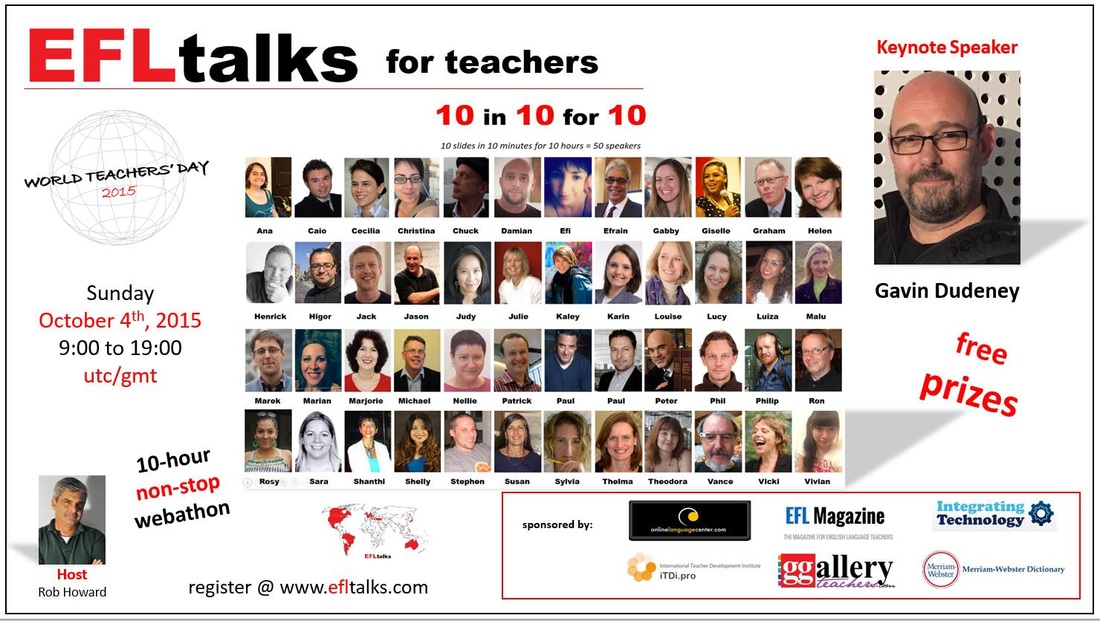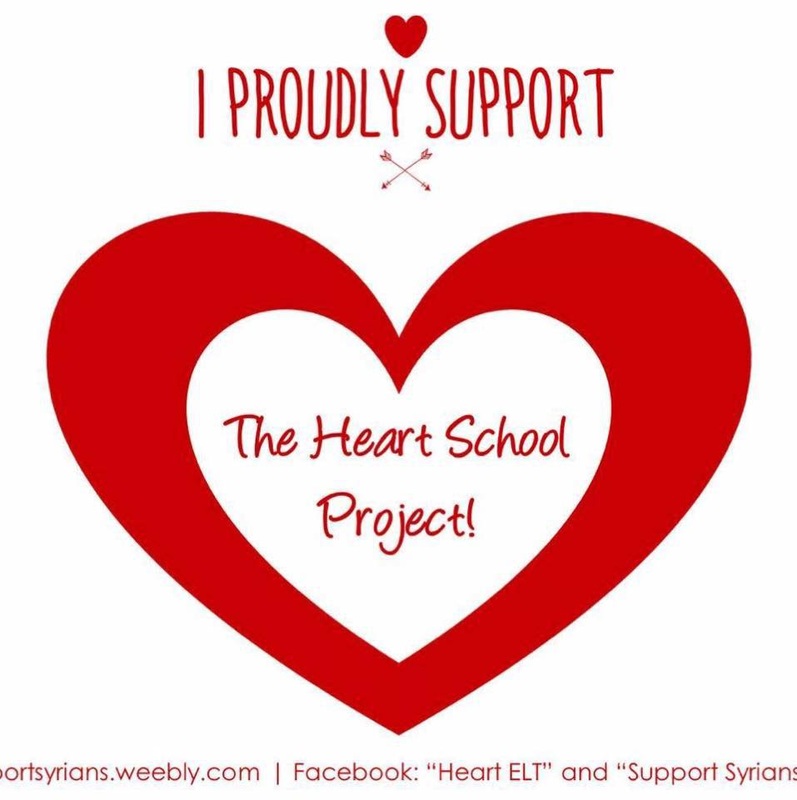|
The last few days before Christmas are marked by LOW CONCENTRATION and HIGH EXCITEMENT built up by all the pre-Christmas activities and the tiring end of the year. I usually reserve these following activities for just this last period and it always captures the students attention.
You can download the links to these activities below. I hope you have fun with these last-minute Christmas activites. Susan
0 Comments
Adults and children alike tend to sing songs often without thinking of their meaning. Christmas is a time for singing and I have broken down a Christmas song for teens and adults, Happy Christmas, as well as one for children, Rudolph, to practise adjectives and expressions. I start by singing the song, we then personalize the main sentences (see my sheets) to make them more meaningful for the students who will hopefully not only remember the new words and expressions repeating them in song but will also have fun doing so. You can download my sheets below. Feel free to delete or translate the Italian into another language. I hope you find the activity useful and enjoyable. Susan
Christmas adverts can be stimulating to use in class for language learning. This particular one is very rich in details so one can use it for vocabulary acquisition. Apart from asking the very specific questions on the sheets, I often expand by asking students to predict was is going to happen next as well as recounting what has just happened. A vocabulary rich Christmas activity to do in class or even autonomously at home: stop the video numerous times following the indications given and enjoy describing all the details of the kitchen in this fun disastrous Christmas with Mog, the cat. Excellent for revising and learning new vocabulary in the kitchen! Enjoy! You can download the sheets below. I hope you find the activity useful and enjoyable. Susan
A Christmas classic in two pages to practise scanning and listening comprehension skills is another way of approaching Dickens and acquiring exam skills. I summarized the story to be done in a one-hour lesson so as not to be too tedious and give a sense of completion. I first hand out the story (see download) or project it on the whiteboard and whilst I’m doing so they can skim it but most students already know the story from films or cartoons if they haven’t already read it. I divide the class into teams A and B. I then ask them questions on the text without the students being able to read them and the first person to find the answer in the text gets a point for their team. They have to read out the complete sentence to answer. This activity gives them listening, scanning, reading and pronunciation practice. It's more fun than just reading the story. There is also a GAP-FILL for homework but one has to first collect in the photocopies with the complete story on it. The competitive element makes it an exciting activity even for those participants who would normally be easily bored by reading a story. To encourage weaker or less collaborative students (I’m thinking of some teens) I sometimes nominate those students to receive 2 or 3 points each for their team, making sure there are an equal number of ‘specially nominated’ students in each team so as to be fair. You can download my three sheets below. I hope you find the activity useful and enjoyable. Susan
As the festive season nears it's nice to do language activities in the Christmas spirit even if our students come from a multicultural background or are atheist. I feel it should be seen by all participants in class not so much as a religious moment solely for Christians (the Church is the appropriate place for that) but as an opportunity to exchange cultural and religious traditions from all over the world. So,whilst I explain to students how the Christmas season is celebrated in Great Britain, I also take the opportunity to ask students of other faiths and non to tell us about their greatest celebrations during the year. It's very interesting to hear about other religious traditions and a moment of sharing. Just as interesting is to discover that many families in far off countries celebrate Christmas despite not being Christian as a day for families to reunite, spend time together and exchange presents. So, apart from singing traditional carols, modern Christmas songs and enacting the Nativity, students enjoy any language activity in a new festive season motif. An activity I read about a couple of years ago but cannot remember the source (please let me know if you recognise who invented this activity) is: GUESS WHAT'S INSIDE THE CHRISTMAS STOCKING! I adapted it into two versions: one stocking for beginners with a PDF of suggestions as to the contents (objects for children & teens) and another stocking for adults with just a few prompts on the language of speculation: It could be... It might be... It can't be.... I thinks it's... It must be made of... It rattles so... etc. This seemingly simple activity causes much speculation amongst participants young and old, keeping them fully concentrated and engaged for more than half an hour, feeling the shape and consistency of the objects through the stocking, trying to guess the materials they are made of as well. At the end the stocking is opened and the objects revealed! A fun, exciting and useful activity for all ages, learning to discuss what things look, feel like and are made of. You can download my two sheets and the audio for beginners. Hope you have fun with them, Susan
|
Categories
All
Would you like regular English learning & teaching ideas? Subscribe to my blog so you don't miss a post!
AuthorMy name is Susan Brodar, born in London into a multilingual family and brought up bilingual English / Italian. Archives
December 2018
|
||||||||||||||||||||||||||||||||||||||||||||||||||||||||||||||||||||||||||||||||||||||||||

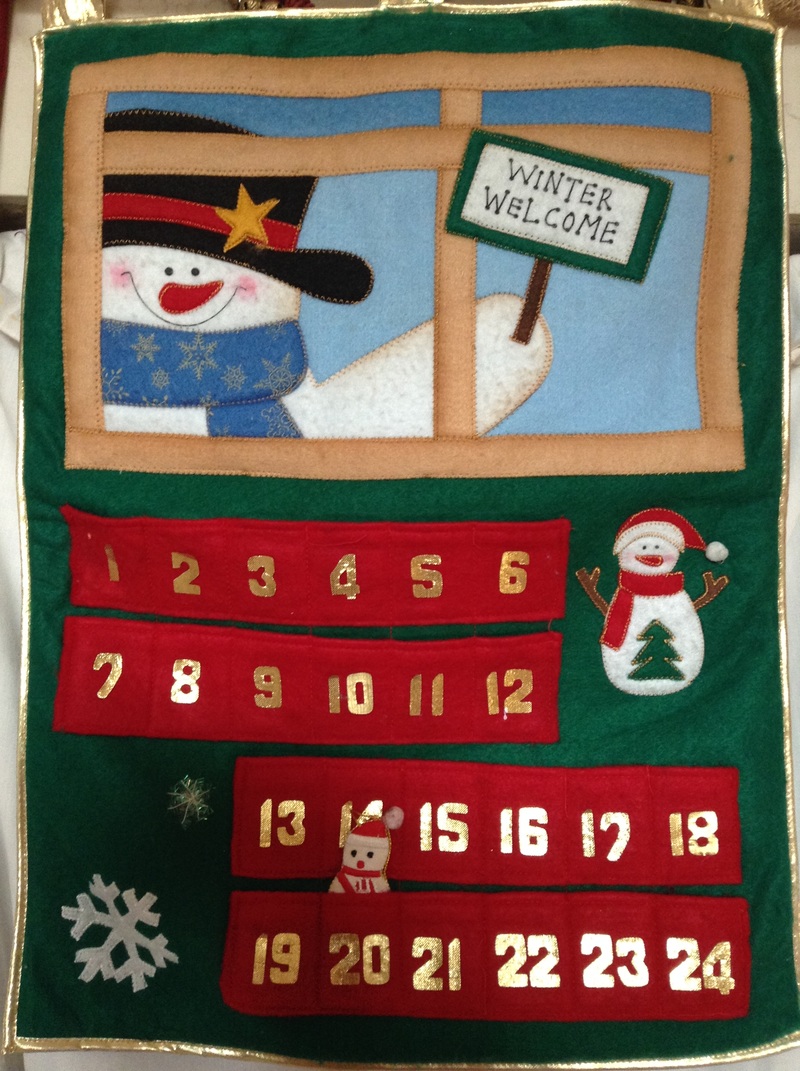

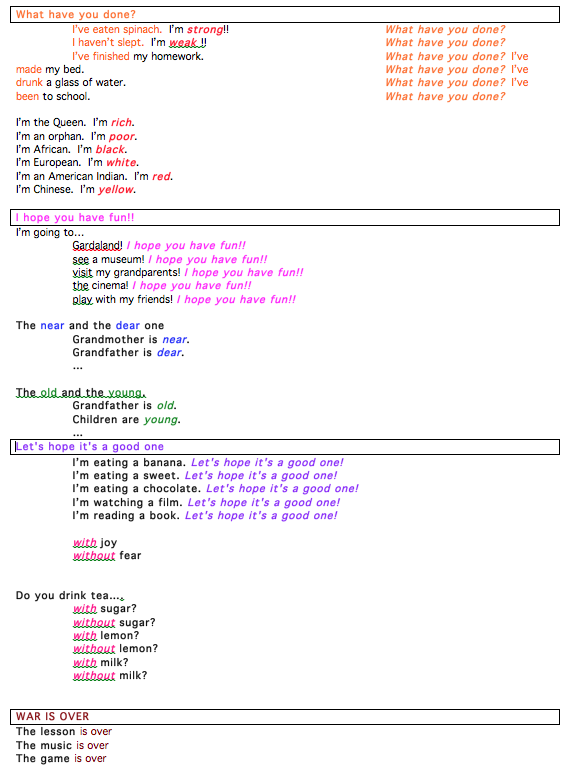



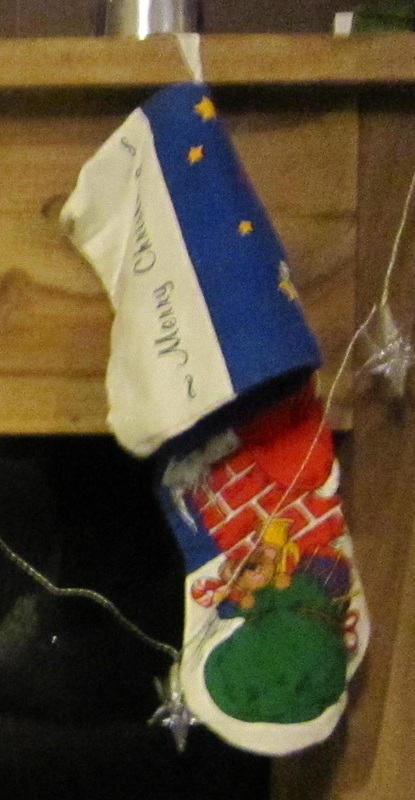



 RSS Feed
RSS Feed
